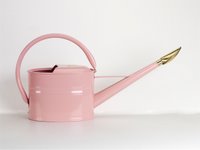Autumn Riffs

The weather was crazy this gardening season but all’s forgiven now. The world is sharp and crisp and nice things are happening.
I looked out my kitchen window the other day and spotted the red-tailed hawk I blogged about recently when I fumbled with my camera and tried in vain to snap his picture as he perched on a garden arbor. This time he was swooping around the backyard. I could only hope he was treating himself to some of the mice and voles that use my place as a co-op. I’ve gone up in cherry-pickers to watch red-tailed hawks in their nests but they’re at their most majestic in flight.
Yesterday, I spotted a praying mantis on a mound of chrysanthemums in the garden and this time the camera was at hand. In fact, she posed for me – she looked right at me in the sunshine and her eyes were like green spotlights. If the hawk seemed like a he, I had no trouble anthropomorphizing the mantis as a female. I kind of like the way the female mantis puts the male of her species in his place. Nobody dares try any of that weaker sex baloney when it comes to praying mantises.
By the way, the chrysanthemums speak up for autumn just the way they’re supposed to. They replaced the Italian white sunflowers in two of my beds that were done in by tropical storm Ernesto. They’re pink and creamy white and they look like giant ice-cream cones. It bugs me when elitists sneer at chrysanthemums – please don’t call them mums – as too common and put them down the way they put down impatiens. That’s nonsense. In the garden, there’s room for all kinds of flowers.
As the earth cools, flower colors intensify. That’s especially true for my morning glories. They keep getting bigger and bluer. They’re living poems.
Not that I’m outside all the time. It is getting colder and I’ve just had the wood stove cleaned to make ready for those days when I curl up by the fire with a crisp apple – we have an orchard nearby – and a good book. I wanted to tell you about two new books for garden and nature lovers.
One is the American Horticultural Society Encyclopedia of Perennials, edited by Graham Rice, a Brit who spends much of his time in the colonies. He and his wife, garden photographer judywhite, have a place in Pennsylvania, where Graham nurtures woodland plants and watches a black bear that invades his yard. Unlike a lot of encyclopedias, it’s written in understandable English instead of botanical-speak and doesn’t have a glossary because it doesn’t need one. And the photos are excellent and none of them are of the postage-stamp variety that often appear in garden encyclopedias.
The other book is a tribute to the protected places of North Carolina’s Piedmont Land Conservancy. Published by the conservancy and appropriately titled “Forever These Lands,” it features photographs by Virginia Weiler, a friend of mine. The land comes gently alive in pictures of trees mirrored in the streams they border, of hills in the russet-light of autumn, of farms and fields, and of plants and people and woodland creatures.
In the meantime, here’s to autumn.



